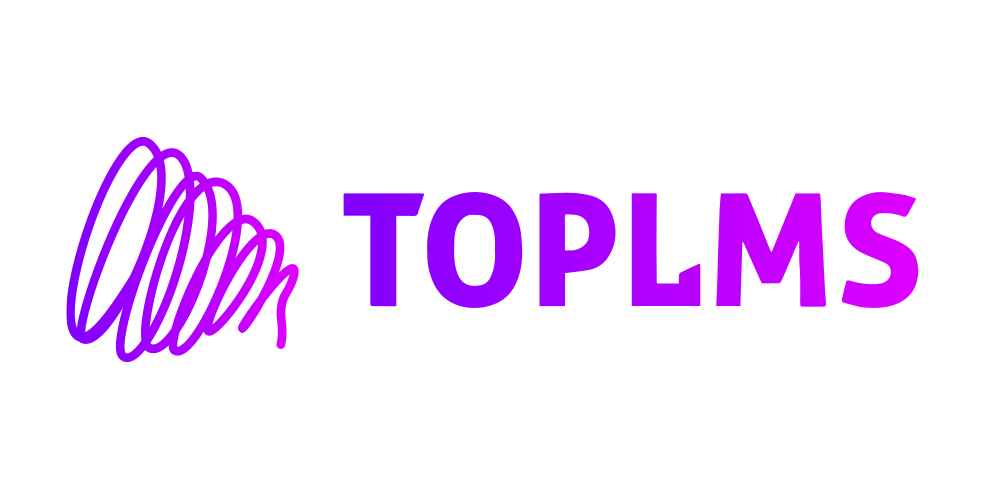LMS (Learning Management System) is software used to plan, implement, and evaluate the learning process. It allows you to create, store, deliver, and track training courses and other content. Teachers can conduct online classes there, develop tests and assignments, and monitor student progress. Students in an LMS can take classes, ask questions, complete assignments, and receive feedback from teachers. LMSs are widely used in educational institutions for distance learning, in companies for staff development, and in any organization that provides educational services.
Features of modern LMS
Modern LMS systems or LMS platforms offer a large number of tools and capabilities for effective management of learning processes. In addition, they help organize and set up e-commerce and empower users by integrating other programs and applications. Here are the main features of modern LMSs:
- Course management: creating, organizing, and publishing training courses, modules, and lessons.
- Monitoring and evaluation: tracking student progress, conducting tests, quizzes, and assessments.
- Interactive tools: forums, chats, video conferencing to facilitate communication and interaction between students and teachers.
- Personalization of learning: adaptation of training programs to the needs and level of knowledge of each student.
- Reporting and analytics: generation of detailed reports on student performance, course activity, and learning effectiveness.
- Access to resources: centralized storage and easy access to learning materials, including texts, videos, audio, and other resources.
- E-commerce: landing page builders, integration with payment systems, promo code generators, customization of sales funnels, and transaction analytics.
- Mobile access: the ability to study anywhere at any time using mobile devices.
- Integration with other systems: interaction with corporate information systems, CRM systems, and other software products to improve the overall efficiency of learning management.
Not all LMS systems have the capabilities and tools listed above. Over decades of development, several types of distance learning systems have emerged that partially or fully meet the needs of their users.
Types of learning management systems
There are several types of LMS systems. Globally, they can be divided into two types: by type of user and by type of implementation.
According to the type of users, there are the following LMS systems:
- Corporate. They are intended for training personnel of companies and enterprises. The functionality allows you to organize the educational process, evaluate students in groups and individually, monitor learning, and receive reports on the results. Such systems can also be used for onboarding new employees, training partners and clients of the company to work with its products. Example: TalentLMS, SAP Litmos.
- Educational. They are designed to organize the educational process. Most often used by educational institutions and companies to train students or clients. Example: Moodle, Google Classroom.
- Hybrid. They are used to train company employees and in the educational environment. They provide monitoring of the learning process and control of learning outcomes. Example: Blackboard.

By the type of implementation, there are the following LMS systems:
- Open source. LMSs are learning management systems that allow users with the appropriate technical knowledge to adapt its capabilities to their needs. Examples: Moodle, Open edX.
- Cloud or SaaS LMS. A system provided as a service and available to users 24/7 via the Internet and any suitable gadget. Examples: Kajabi, Softbook, Teachable.
- On-premises. Systems installed on the local servers of the client company.
- Closed source. Software with a license fee for use.
- With development tools. Systems with built-in tools for creating online courses.
- Custom. Special LMSs designed to meet specific learning needs, business tasks, and business goals.
- Mobile. LMSs that allow learners to use any device to learn. Examples: EdApp, SkillzRun.
What to look for when choosing an LMS system
When choosing an automated learning management system, you should pay attention to a number of aspects:
- Functionality. Make sure that the system has all the necessary functions for work. For example: role-based course management, progress tracking, support for various content formats, data import, communication tools, integration with other tools, etc.
- Ease of use. The interface should be intuitive for all categories of users – both teachers and students. This directly affects the speed of learning and the efficiency of using the platform.
- Scalability. The LMS should be able to withstand the growth in the number of users and the amount of content without losing performance.
- Security. Pay attention to the security measures taken by the platform, including data protection, backups, access control, and compliance with legal requirements.
- Support and maintenance. The vendor must provide adequate technical support and software updates to keep the platform running smoothly.
- Cost. Compare different LMS price points, including startup costs, monthly and annual fees, and possible additional costs for customization, integration, and support.
- Integration with other systems. Check whether the LMS allows you to integrate other systems and applications — for example, payment systems, mailing systems, CRM, video conferencing programs, etc.
LMS review
An overview of learning management systems with ratings and grades is available in the slide below. This is a selection of companies that help create and sell online courses and organize training.
Modern LMS platforms are indispensable components of distance learning. They provide tools for creating and delivering classes and help companies and individual experts develop and sell unique training programs and make money on them. This is also facilitated by the type of platform, set of features, and functionality. LMS systems can be corporate, educational, and hybrid, and by implementation, they are divided into cloud, on-premises, and open source. When choosing an LMS, it is important to consider functionality, usability, security, support, cost, and integration with other systems so that the platform facilitates work rather than hinders it.


